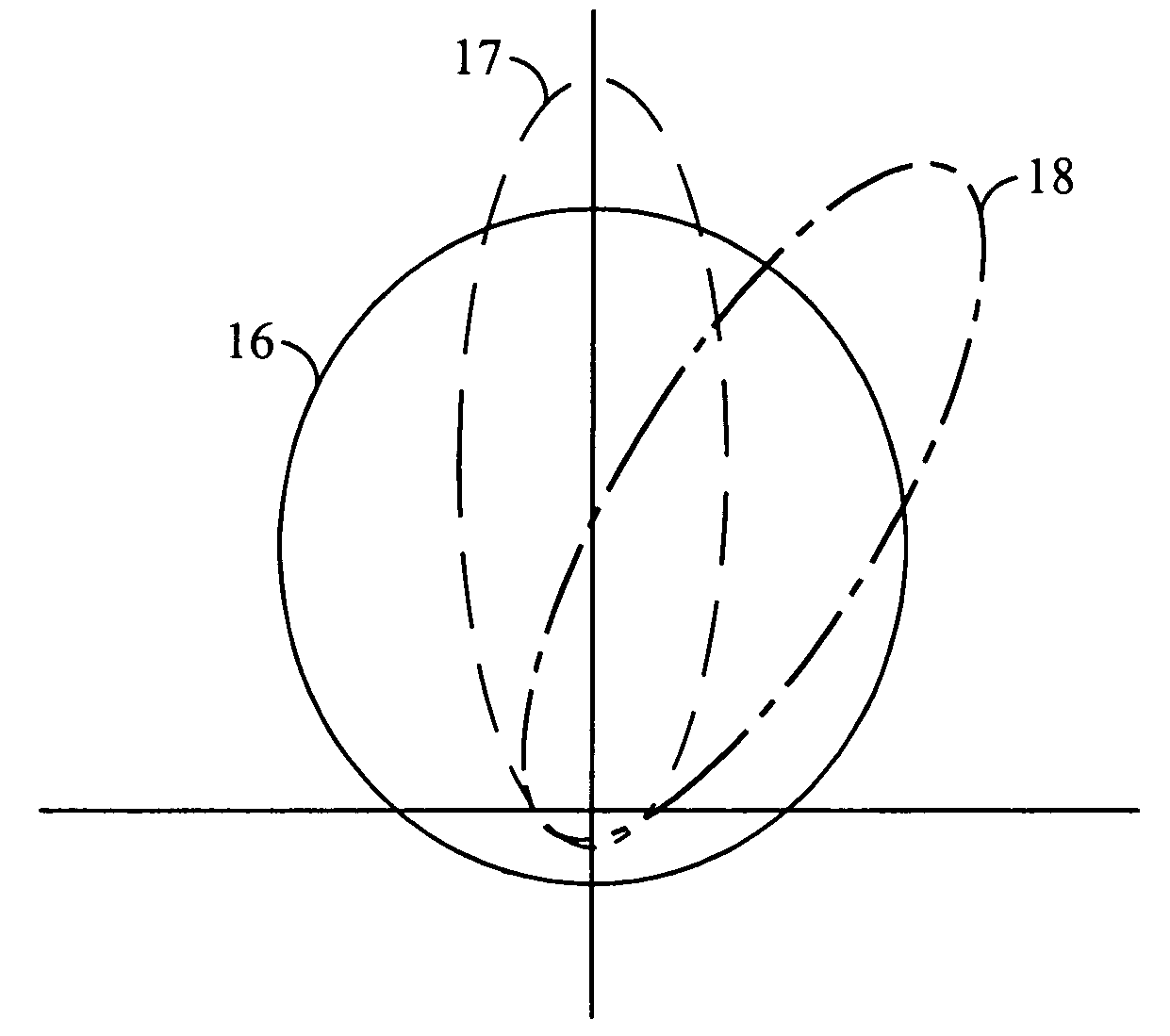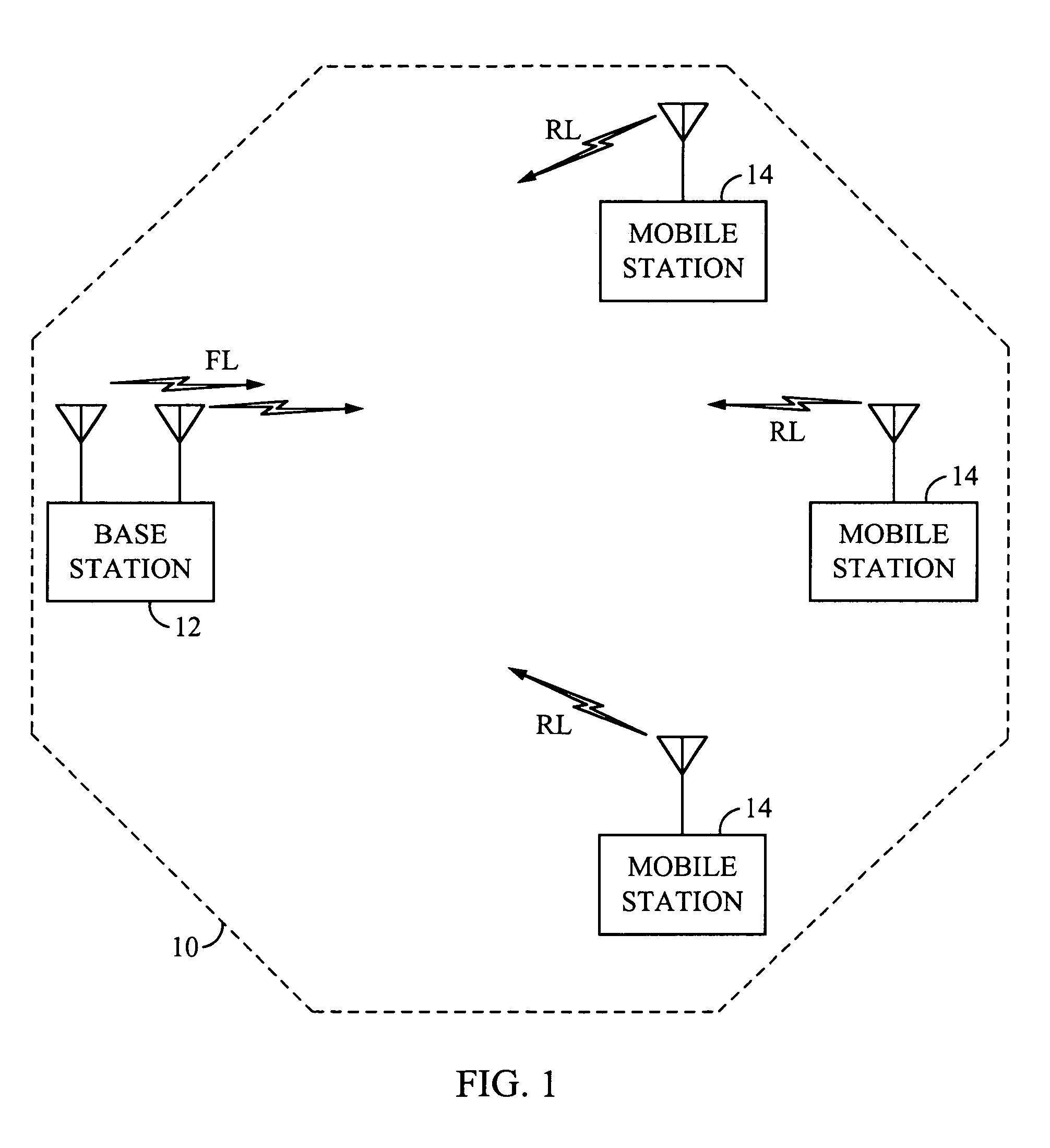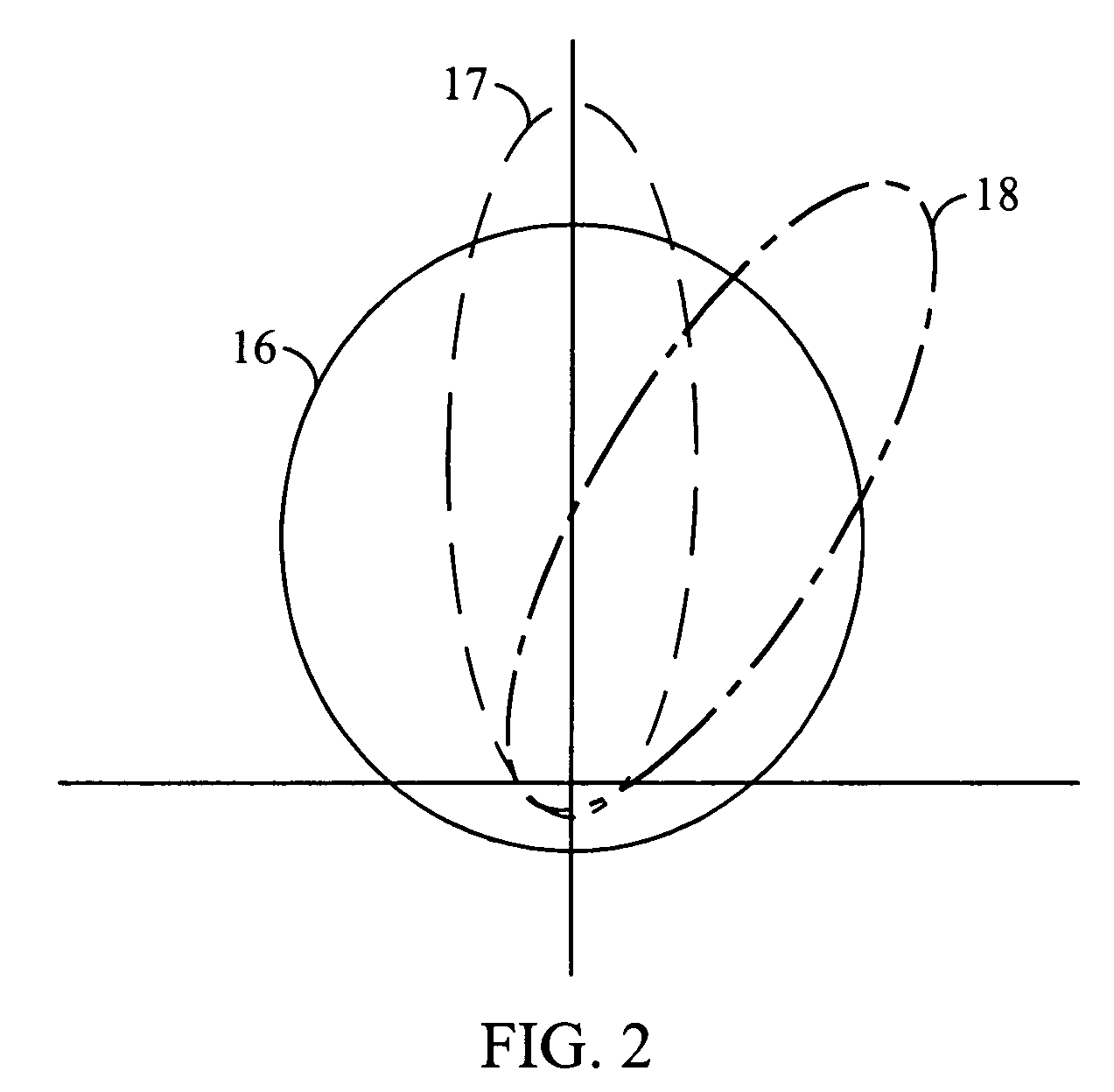System and method for selectively forming and rotating a transmission beam
a transmission beam and transmission beam technology, applied in diversity/multi-antenna systems, wireless communication, wireless commuication services, etc., can solve the problems of reducing the overall data throughput from the base station, affecting the overall data throughput of the base station, and achieving no multi-user diversity gain, etc., to achieve the effect of maximizing sector throughput, reducing requested data rates, and important effects on sector throughpu
- Summary
- Abstract
- Description
- Claims
- Application Information
AI Technical Summary
Benefits of technology
Problems solved by technology
Method used
Image
Examples
Embodiment Construction
[0043]Broadly speaking, the invention comprises systems and methods for controlling the fluctuation rate (that is the rate of induced SINR fluctuations which may be quantified in units of cycles per second if the induced fluctuations are periodic) and potentially the beam width of a time-varying base station antenna gain pattern used in conjunction with a FPM or similar scheme to optimize the overall data throughput from a base station, as a function of the number of mobile stations communicating with the base station.
[0044]In one embodiment, a method comprises identifying the number of mobile stations within a sector that are communicating with the sector's base station, and then selecting a fluctuation rate and a beam width to maximize the data throughput from the base station in conjunction with a FPM or a similar scheme. The base station turns off the FPM and turns on a time-invariant broad antenna gain pattern if the number of mobile stations is less than a lower threshold, N1....
PUM
 Login to View More
Login to View More Abstract
Description
Claims
Application Information
 Login to View More
Login to View More - R&D
- Intellectual Property
- Life Sciences
- Materials
- Tech Scout
- Unparalleled Data Quality
- Higher Quality Content
- 60% Fewer Hallucinations
Browse by: Latest US Patents, China's latest patents, Technical Efficacy Thesaurus, Application Domain, Technology Topic, Popular Technical Reports.
© 2025 PatSnap. All rights reserved.Legal|Privacy policy|Modern Slavery Act Transparency Statement|Sitemap|About US| Contact US: help@patsnap.com



